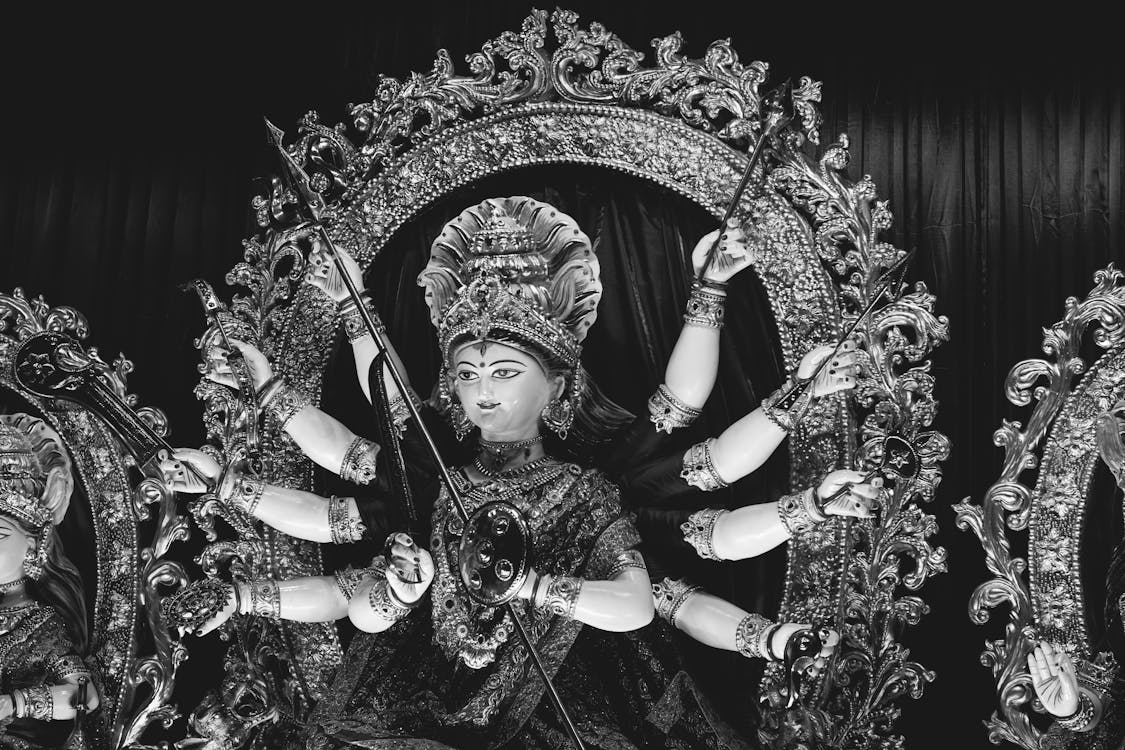Chaitra Navratri: Celebrating Divine Feminine Energy and Renewal
Chaitra Navratri, a joyous Hindu festival celebrated with fervor and devotion, marks the arrival of spring and the beginning of the Hindu New Year. This auspicious occasion, spanning nine days of worship, fasting, and festivities, honors the divine feminine energy in its various forms. Let's delve into the traditions, rituals, and significance of Chaitra Navratri.

What is Chaitra Navratri?
Chaitra Navratri, falling in the Hindu month of Chaitra (March-April), is a significant festival dedicated to the worship of Goddess Durga and her various incarnations. It signifies the victory of good over evil and the celebration of new beginnings, fertility, and abundance.
Goddess Worship During Navratri: Each day of Chaitra Navratri is dedicated to a different form of Goddess Durga:
Day 1 - Shailaputri: Goddess Parvati, the daughter of the mountains, is worshipped on the first day. She symbolizes strength and determination.
Day 2 - Brahmacharini: This form represents the unmarried form of Goddess Parvati, emphasizing penance and devotion.
Day 3 - Chandraghanta: Goddess Chandraghanta, with a half-moon shaped like a bell on her forehead, represents bravery and protection.
Day 4 - Kushmanda: The creator of the universe, Goddess Kushmanda, is worshipped for health and wealth.
Day 5 - Skandamata: Goddess Skandamata, the mother of Lord Kartikeya, represents motherly love and protection.
Day 6 - Katyayani: This fierce form is worshipped for courage and valor.
Day 7 - Kaalratri: Goddess Kaalratri, the destroyer of ignorance and darkness, symbolizes inner strength.
Day 8 - Mahagauri: The epitome of beauty and grace, Goddess Mahagauri is worshipped for purity and peace.
Day 9 - Siddhidatri: Goddess Siddhidatri, the granter of wishes and spiritual enlightenment, is worshipped on the final day.
Traditions and Rituals:

Ghatasthapana: The festival begins with Ghatasthapana, the ritual of establishing a clay pot symbolizing the presence of the Goddess.
Fasting: Devotees observe fasts during Navratri, abstaining from grains, non-vegetarian food, and alcohol.
Puja and Aarti: Elaborate prayers, mantras, and aartis are performed to invoke the blessings of the Goddess.
Navratri Garba and Dandiya: In many regions, colorful Garba and Dandiya Raas dances are performed, celebrating joy and unity.
Significance of Chaitra Navratri:
It marks the beginning of the agricultural season, invoking blessings for a fruitful harvest.
Devotees seek spiritual growth, purification, and blessings for success and prosperity.
The festival signifies the triumph of righteousness and the victory of light over darkness.
As we immerse ourselves in the vibrant festivities of Chaitra Navratri, we celebrate the divine feminine energy that pervades the universe. From the devotion of Ghatasthapana to the joyous Garba dances, each ritual holds deep symbolism and meaning.

May Goddess Durga, in her various forms, bless us with strength, prosperity, and wisdom during this auspicious time. Let us embrace the spirit of renewal, unity, and devotion that Chaitra Navratri brings, heralding a new season of joy and abundance. As you celebrate Chaitra Navratri, may the divine blessings of Goddess Durga fill your life with happiness, prosperity, and fulfillment. Happy Chaitra Navratri!

 Cricket Score Counter
Cricket Score Counter Heads or Tails
Heads or Tails
You have not logged in, please Login to comment.